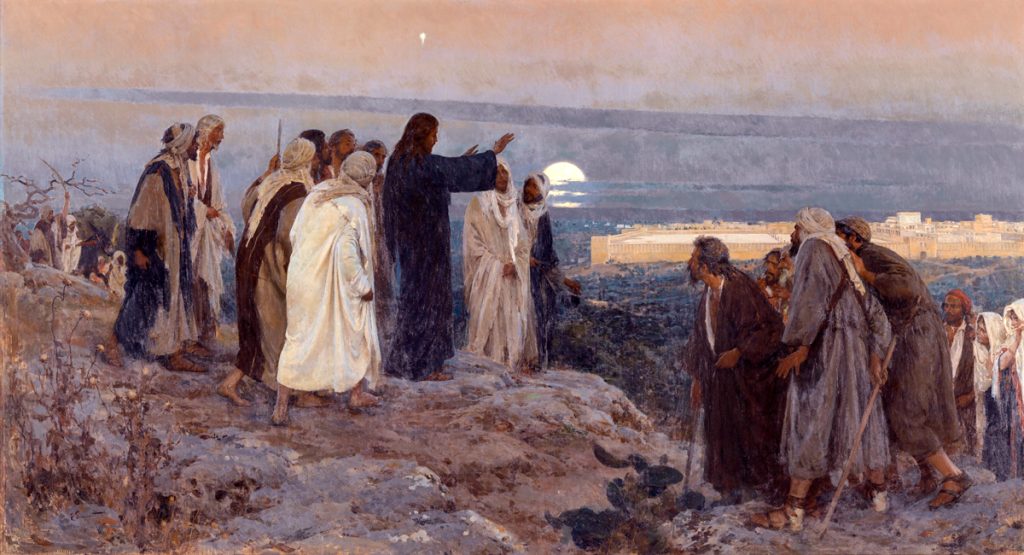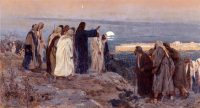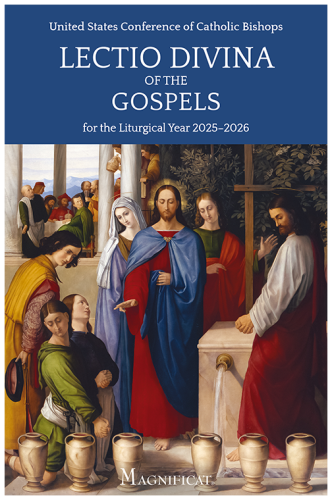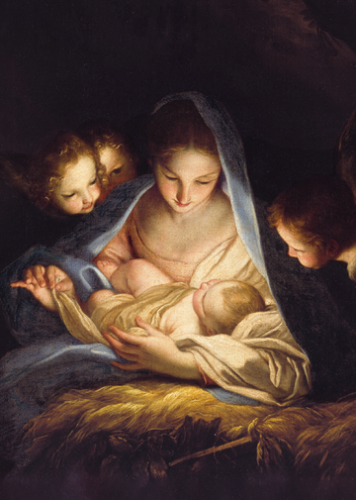Flevit super illam, Enrique Simonet (1866–1927).
A waxing moon sets as the morning star rises, heralding the dawn of Palm Sunday. The faint glow of first light illumines a mournful figure prophesying over Jerusalem: Videns Jesus civitatem flevit super illam…. “Beholding the city, Jesus wept over it…” (Lk 19:41).
Spanish artist Enrique Simonet sketched and prayed on the heights of the Mount of Olives, overlooking this very vista, before completing Flevit super illam in Rome at the age of twenty-six. A devout Catholic and former seminarian, the painter sought to explore the profundity of Christ’s sacred humanity—evidenced by such exquisite grief—within a setting that faithfully reflected the region’s inhabitants, topography, and unique light. The result halted viewers in their tracks at the International Fine Arts Exhibition of 1892, where the piece made its debut and secured first prize.
Stepping into the scene
A monumental ten-by-eighteen-foot canvas underscores the gravitas of the scriptural event. Life-sized figures approach Christ, transfixed by his words and presence. Several turn their backs to the viewer. This powerful compositional device, known as rückenfigur—literally “back-figure”—is an invitation to follow these faceless onlookers into the scene.
Christ’s prominence is established by his height, dignified posture, and graceful gesture. The midnight blue tones of his robe are accentuated by flanking figures clad in white, while a brilliant beacon overhead recalls his cosmic identity: I am the root and the offspring of David, the bright morning star (Rv 22:16).
The divine visage remains largely hidden in profile; the viewer is left to imagine Christ’s expression. Simonet thereby preserves the mystery surrounding Christ’s anguish, concealing the depths of the divine broken heart. Christ’s enigmatic air naturally rouses the viewer’s curiosity.
A distinct and central opening in the gathering crowd further beckons the viewer. Stepping into this unoccupied space at Christ’s side, one can contemplate the city—and the upcoming events of Holy Week—through the Savior’s tear-filled eyes.
The moon sets
The heavens proclaim that Christ’s hour has come. A refulgent moon dominates the skyline; its glow combines with the dim pre-dawn twilight to softly illuminate the scene. In stark contrast to the thickly applied layers of paint that provide texture to the terrain, Simonet colors the sky with the lightest touch, allowing portions of prepared canvas to remain visible. The resulting diffuse luminosity marries breathtaking artistic beauty with deep symbolic meaning. The Jewish festal cycle is based on the lunar calendar: this waxing moon signals the imminence of Passover, the occasion of Christ’s ultimate sacrifice.
Cityscape
A mantle of olive leaves shrouds the Kidron valley—the lowlands separating Gethsemane from the Temple Mount. Drains emptying from the Temple’s altar into the Kidron brook will soon run red with the blood of thousands of Passover lambs.
Christ’s view encompasses the city’s eastern gate and the route of his ascent; directly above, the vast Temple complex is crowned by the Sanctuary and the Holy of Holies. A distant tower marks Herod’s opulent residence along the western ramparts; to the far right, the ancient palace of the Hasmoneans now serves as a Praetorium. And, just out of view, the city’s Second Wall hides a public garden. Its quarry boasts a prominent hill: Golgotha.
King of Israel
To the far left a donkey crests the ridge, accompanied by men hailing Jesus and holding palms. A certain electric excitement has already begun to spread. These first notes of the crowd’s swelling song will reach a fever pitch of ecstatic praise as Jesus descends toward the city: Blessed is the king who comes in the name of the Lord (Lk 19:38).
The people know this story—the city has seen it before. One thousand years earlier, King David’s son Solomon was set upon his father’s mule in formal procession along this very path. Entering from the Mount of Olives, Solomon crossed the Kidron valley; there he was anointed King of Israel (1 Kgs 1:32-48). Christ’s action is charged with symbolic power and ancient allusion: he enters Jerusalem as Messianic heir to the Davidic throne.
Imminent destruction
Yet his reign will not be characterized by military prowess or political triumph. Beholding the city in all its splendor, Christ laments the rejection of the otherworldly peace he so ardently wishes to bestow. With pained compassion, he predicts the calamity that will befall Jerusalem in a.d. 70—within the lifetime of many there present. In pitiless suppression of Jewish rebellion, Roman legions will raze the city to the ground, massacring her people (Lk 19:42-44).
The urban landscapes of Jerusalem and Rome are marked to this day by the fateful event. The Temple was never rebuilt; pious Jews congregate in lament at the Wailing Wall, a fragment of the foundation that once supported the Holy of Holies. And, across the centuries, visitors to the Colosseum have been greeted by scenes of the despoiled Temple treasury as they pass through the triumphal Arch of Titus.
Weeping to the east of Eden
Jesus approaches the city’s eastern façade and weeps, recalling Adam, who shed bitter tears to the east of Eden (Gn 3:24, 4:16) at the barred gates of paradise. “Before the gates Adam wept, lamenting with a pitiful voice…” (Aposticha of Forgiveness Sunday, Byzantine liturgy).
There are only three instances of Christ weeping recorded in Scripture: at the tomb of Lazarus, on the slopes of Olivet, and in the Garden of Gethsemane. All occur shortly before the Passion and due east of Jerusalem—a city symbolically linked with Eden since the time of Solomon. The New Adam weeps to the east of Eden—grieving the tragedy of paradise lost—knowing full well what he must do to regain it.
On the occasion of his glorious victory, Christ’s first words announce the definitive reversal of Adam and Eve’s ancient despair. Standing as the New Adam in the midst of the paradisiacal garden, he delivers the good news to the woman: Why are you weeping? (Jn 20:15).
Lift up your heads, O ancient gates! (Ps 24:7). The King of Glory has opened paradise.
Amy Giuliano
holds degrees in art history from Yale and theology from the Angelicum, Rome.













Additional art commentaries